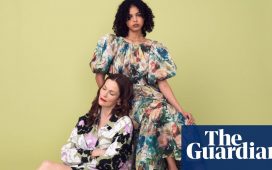In the current climate filled with so much black trauma, there’s a special significance in the Vogue Challenge – a celebration of black beauty and black bodies. The concept is simple: reimagining celebrated Vogue covers with yourself in place of the model or the celebrity. The challenge, which began on TikTok in May, then went viral on Twitter and Instagram, producing hundreds of covers. The beauty and inventiveness of many of the covers were undeniable – and made you think black beauty would never be celebrated like this on the cover of US Vogue. It also underlined the emptiness of US Vogue’s editor-in-chief Anna Wintour’s apology to black creatives: “Vogue has not found enough ways to elevate and give space to black editors, writers, photographers, designers and other creators.”
The problem is that she has been the editor for three decades. If she really cared about black voices and understood systemic racism on a deeper level, she would have already made some changes to the system. She’s had enough time and wields enough power to change things. But perhaps her reluctance goes deeper. “I wanna say one thing: Dame Anna Wintour is a colonial broad,” said her former colleague André Leon Talley on Sandra Bernhard’s show on SiriusXM. “She’s a colonial dame. I do not think she will ever let anything get in the way of her white privilege.” A recent New York Times article, meanwhile, speaks of how employees of colour “faced ignorance and lazy stereotyping” from white bosses around the subject of black culture.
The lack of evolved conversations around black and brown identity can be starkly felt around the fashion industry. Major brands are being called out for racism that is visible on the shop floor and systemic and coded. The experiences of PoC workers being belittled and ignored by white superiors (microaggressions by any other name) were all too common in the testimonies of black and brown workers who spoke out amid the current racial reckoning.
Wintour’s statement seems especially lacking in actual action when you consider the stats. The Pudding did a deep dive into the skin tone of US Vogue’s cover stars. One of its findings was that three out of 81 models were black between 2000 and 2005. It’s improved over time but the models that did appear on the cover generally had a lighter skin tone, adhering to the eurocentric beauty ideal.
Beverly Johnson was US Vogue’s first black cover model, in 1974. “[My agent] said, ‘You’re on the cover.’ And I was like, ‘Oh, the cover of what?’ She said the cover of Vogue magazine. I remember my heart was racing just like it is now,” she told NPR in 2018.
But even the joy of this was covered in another reality. The reality of the Token. The idea that there is only one model of colour who is allowed to be present at any one time (similarly, André Leon Talley is the only known black member of staff at US Vogue). As the former model Grace Jones wrote in her autobiography I’ll Never Write My Memoirs, “Beverly was one of the reasons I left the States. I knew that as long as she was in place she would get everything … One black model was all they needed and I would pick up the crumbs … [Beverly] was the token black model. They didn’t need two tokens.” Indeed, the next black model to appear on the cover of US Vogue wasn’t until three years later, in 1977, with Peggy Dillard. Fortysomething years later and Joan Smalls’ brilliant and searing testimony of racism in the fashion industry described the attitude towards her as “the token black girl”.
This tokenistic approach is extended to fashion brands’ approach to their responses post-George Floyd, which have been characterised by their surface nature, treating racial issues like another trend. “The industry that profits from our black and brown bodies, our culture for constant inspiration, our music, and our images for their visuals have tiptoed around the issues. You’re part of the cycle that perpetuates these conscious behaviours,” said Smalls.
Denials of her departure notwithstanding, Wintour should be worried. Times are changing. Samira Nasr was just announced as the first editor of colour at Harper’s Bazaar since the magazine was founded in 1867, while British Vogue’s Edward Enninful has done amazing things with a radically race-conscious editorial agenda (Enninful posted selections of his favourites from the Vogue Challenge). “The world is changing right before our very eyes,” wrote the model Anok Yai in O magazine, “and we won’t be tolerant of intolerant any longer.” Tokenism is so last season.














